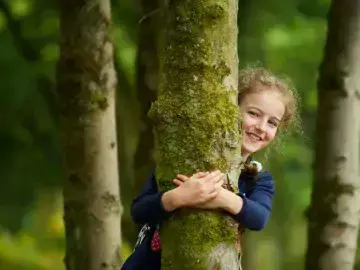
Mapping water habitats
Mapping water habitats is part of the Mapping your site activities, enabling you to explore and map the habitats your site currently offers for nature. Understanding your starting point is really important and will allow you to measure any nature gains you achieve when you start making enhancements to your site. Mapping water is one of eight habitat mapping sessions in this unit of learning.
Before mapping any water habitats, the introductory activities have been designed to support learners in identifying types of water bodies, allowing them to answer the questions in the Water Flowchart accurately. These activities can also be used as standalone activities, promoting a positive connection with nature.
It is essential to prioritise safety when engaging in activities around water. Please be aware that water environments carry specific risks and refer to guidance from your area health and safety consultant, such as CLEAPSS.
You can carry out this activity at any time of year.
Getting to know your space
Preparation
Green skills
- identification and ecology
- recording data
- interpreting data
What you need
- Reed uses worksheet
- clipboards
- drawing materials
- a tablet, laptop, or desktop PC to access the online Habitat Mapper tool
- a printed map of your site, if you do not intend to use the Habitat Mapper outdoors
Location
Outdoors
Useful guidance
Resources
Step by step
- Divide learners into small groups (3 or 4 is a good number for this activity) and give them each a set of Reed Uses cards.
- Give the group 10 minutes to read through the different uses on each card and order them by how useful they think they are. Remind the learners that there is no right answer, but they must listen carefully to each other to come to a consensus.
- Use the final 5 minutes to ask groups to share and compare the order of their cards, justifying their decisions to the class. (You might prompt your class by asking them to think about how beneficial the uses are to humans, to animals, to the environment, and which uses are more sustainable).
- After completing this activity, head outdoors to an area of your site that holds water for at least two months of the year. There doesn’t need to be water there at the time of the activity.
- Learners can use the Water flowchart to decide what type of water habitat you have.
- Educators can work together with learners to draw the water habitat on to the printed map of your site, or (if you have internet connectivity outdoors) directly on to the online Nature Park map using the Habitat Mapper tool.
- Repeat the flowchart for each separate area of water on your site, until you have mapped them all.
- Back in the classroom, if you used a printed map, transfer the areas of water habitats on to the Nature Park map using the Habitat Mapper tool. This is a really important step to ensure your site and your observations are part of national community science research.
- Return to the Mapping your site page and select the next habitat category you have on site.
Reflection
Encourage learners to reflect on the water habitats present in their surroundings. Consider whether these habitats primarily serve human needs or wildlife. Discuss the significance of water sources for nature - drinking, bathing, breeding (e.g. frogs), or living an entirely aquatic lifestyle. Explore the role of waterbodies in supporting biodiversity and sustaining life.
You could also reflect on the locations of water habitats on your site and whether they contribute to managing water flow and limiting flooding - would rain water flow into them after a heavy storm, for example? Discuss the potential impact of water habitats in mitigating the effects of climate change and extreme weather.
What to try next
Add other habitats to your Nature Park map

Mapping microhabitats
Begin activity
Habitats: Mapping hedges and bushes
Begin activity